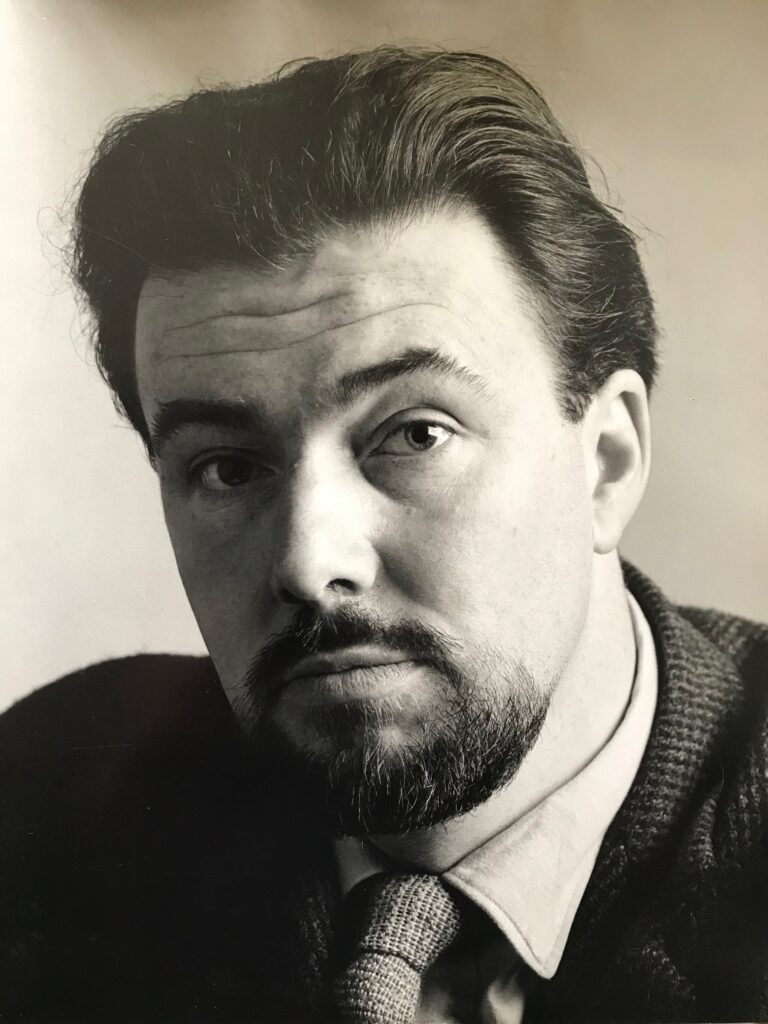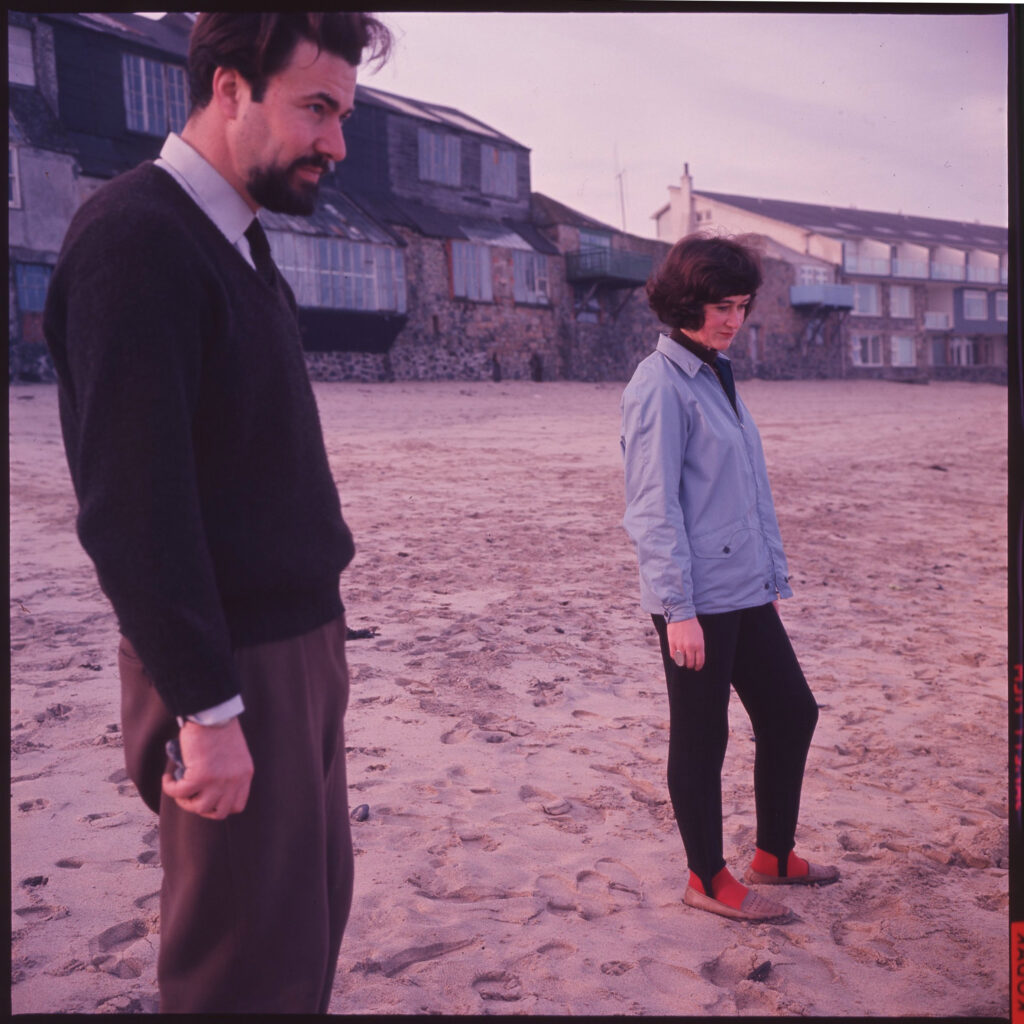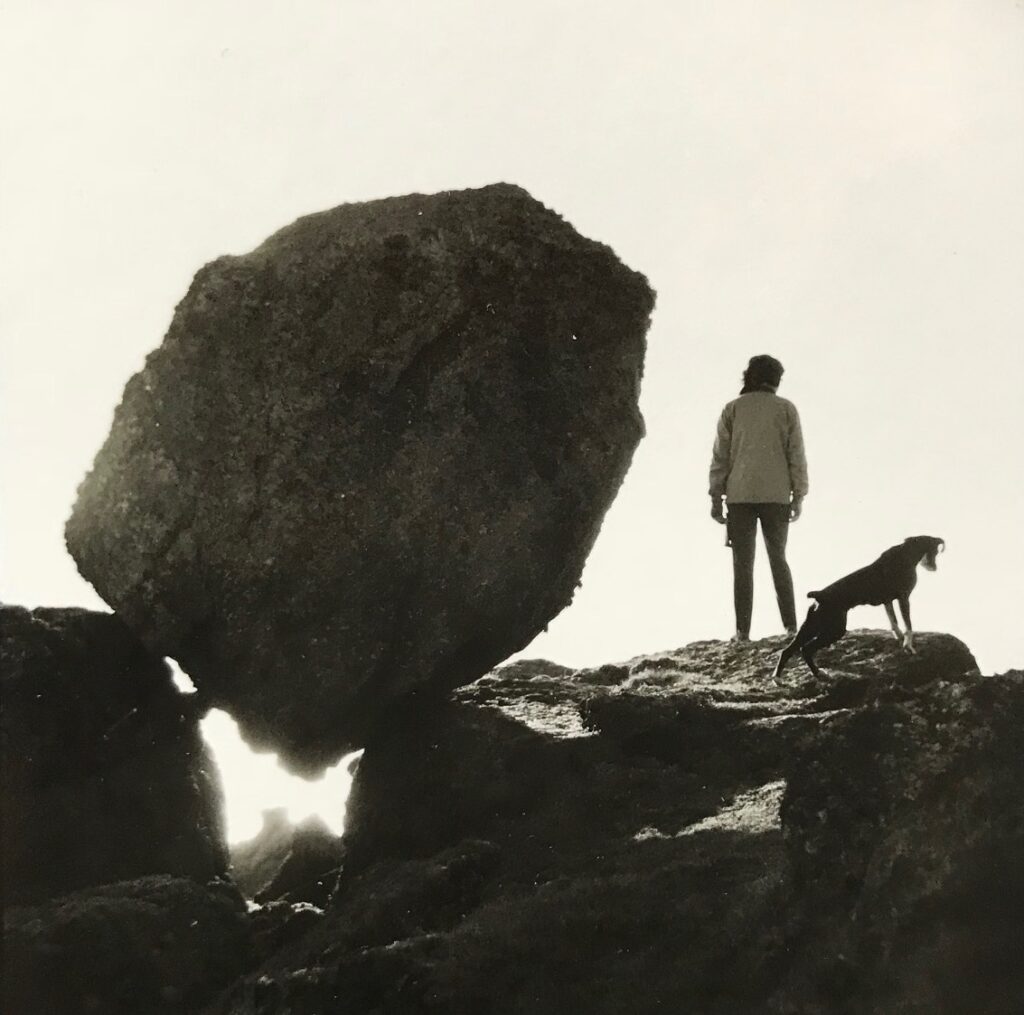1930 – 2012

photographed by Adrian Flowers
Although a stalwart of the St. Ives art world through the 1950’s and ‘60’s, Michael Seward Snow is today not so well-known as his fellow artists who settled in Cornwall, such as John Wells, Bryan Wynter or Wilhelmina Barns-Graham. Yet, with his love of poetry and painting, Snow’s aesthetic embodies the vibrant connection that existed between literature and the visual arts in St. Ives. He was multi-talented; writer, painter, sculptor, tutor and occasional photographer. Snow’s photographs of his friend, the poet William Sydney Graham, are in the National Portrait Gallery. Along with his second wife Margaret Lambert, he edited Night Fisherman: Selected letters of W. S. Graham, a testament to the writer whose work celebrates both the Cornish landscape and the artists inspired by its rocky coastline.
The son of a schoolteacher, Michael Snow was born in Manchester in 1930, and attended the Lawrence Sheriff School in Rugby, where he developed an interest in art and poetry. He worked for some years as a librarian, painting in his spare time. In 1951, after visiting Liverpool and seeing an exhibition of contemporary art from St. Ives, he and his first wife Sylvia Jarrett, and their friend Alexander Mackenzie, decided to settle in Cornwall. A graduate of Liverpool College of Art, Mackenzie was one of the early influences on Snow’s development as an artist.

Largely self-taught, Snow was a generation younger than Terry Frost, Barns-Graham and Ben Nicholson, and was receptive to the new ideas expressed in their work. In his own art, he sought to emulate their approach to abstraction, and in paintings such as Sea Cliffs – West Penwith created a visual translation of the rhythmic motion of waves and the ragged line of Cornish clifftops. Other abstract works, such as Earth Slip and Triad 2, evoke the sea-rounded stones on the shores below those cliffs. He fitted in well with the St. Ives art scene, was elected a member of the Penwith Society in 1953 and became its secretary the following year. A talented artist and a fine colourist, he was more literal in his approach to abstraction than Ben Nicholson or Patrick Heron, and his paintings do not have the same hard-won abstract visual language that characterises the work of Peter Lanyon, but nevertheless he produced fine paintings, with an instinctive sense of form and colour.

Photograph by Adrian Flowers
In 1956, Snow and his wife divorced, with Sylvia then marrying their mutual friend, the poet Robin Skelton. In a neat and amicable reciprocation, Margaret Lambert, Skelton’s partner, then married Snow. The following year Snow and Skelton were in Manchester, where, along with John Anthony Connor, they founded the slightly anarchic Peterloo Group, and held a number of exhibitions, the first being in the large front room of Skelton’s flat. Skelton and his wife Silvia later settled in British Columbia, where he became a university professor, prolific author, and an authority on Irish poetry. Snow and Margaret Lambert returned to St. Ives, where they had a son, Justin. The Peterloo Group proved resilient, evolving from informal beginnings into the Manchester Institute for Contemporary Art.

Not long after their return to St. Ives, in December 1963, Adrian Flowers visited the town, photographing Snow and Margaret Lambert, walking on the beach below Porthmeor Studios, and along the nearby clifftops. He also recorded the dramatic rock formations of West Penwith and the sea-rounded stones that inspired many of Snow’s paintings.

Back in the studio above Porthmeor Beach, Flowers took a sequence of dramatic photographs, in which Snow laid a canvas flat on the studio floor, and then prepared it for painting. He evidently preferred to work standing above his paintings, using long-handled artist’s brushes. In one sequence, Snow is actively painting: an abstract composition evolves, circular motifs juxtaposed with parallel lines. Climbing up to a roofspace, Flowers photographed the artist from above. Other images record Snow accessing the beach below his studio, by simply climbing out the large window and shinning down a ladder. Adrian’s dog Sarah, a boxer labrador cross, accompanied him and appears in several photographs.

A later sequence of photographs taken by Flowers, 5 x 4 colour transparencies, depict abstract paintings by Snow, including the canvas Archangel, a work dating from April 1962. There are also photographs (undated), labelled “Mike Snow” showing a large welded metal sculpture, perhaps four metres high. Based on the structure of a leaf, this white-painted sculpture was probably a commission, destined for a public site. [AF 4258]

In 1964 Snow showed at the Rowan Gallery in London and the following year, took a job teaching at the Exeter College of Art and Design, a post he held for two decades. Having access to the college’s sculpture department, and inspired by an interest in cosmology and physics, he decided to make a series of welded metal sculptures. These works, some with metal discs, are not unlike the contemporary sun and moon sculptures of Morris Graves. In 1967, Flowers took large-scale colour transparencies of one of these metal sculptures by Snow. Two similar pieces are in the Box gallery collection in Plymouth, where Snow’s friend Alexander Mackenzie was Head of Fine Art from 1964 to 1984. In later years, the Snows lived on the edge of Dartmoor. Margaret died in 2009; Michael, aged 82, in 2012.
[see Robin Skelton “Retrospect- 4: A Brief Account of the Peterloo Group” in Ambit No. 10 (1961) pp 5-8]
Text: Peter Murray
Editor: Francesca Flowers
All images subject to copyright
Adrian Flowers Archive ©